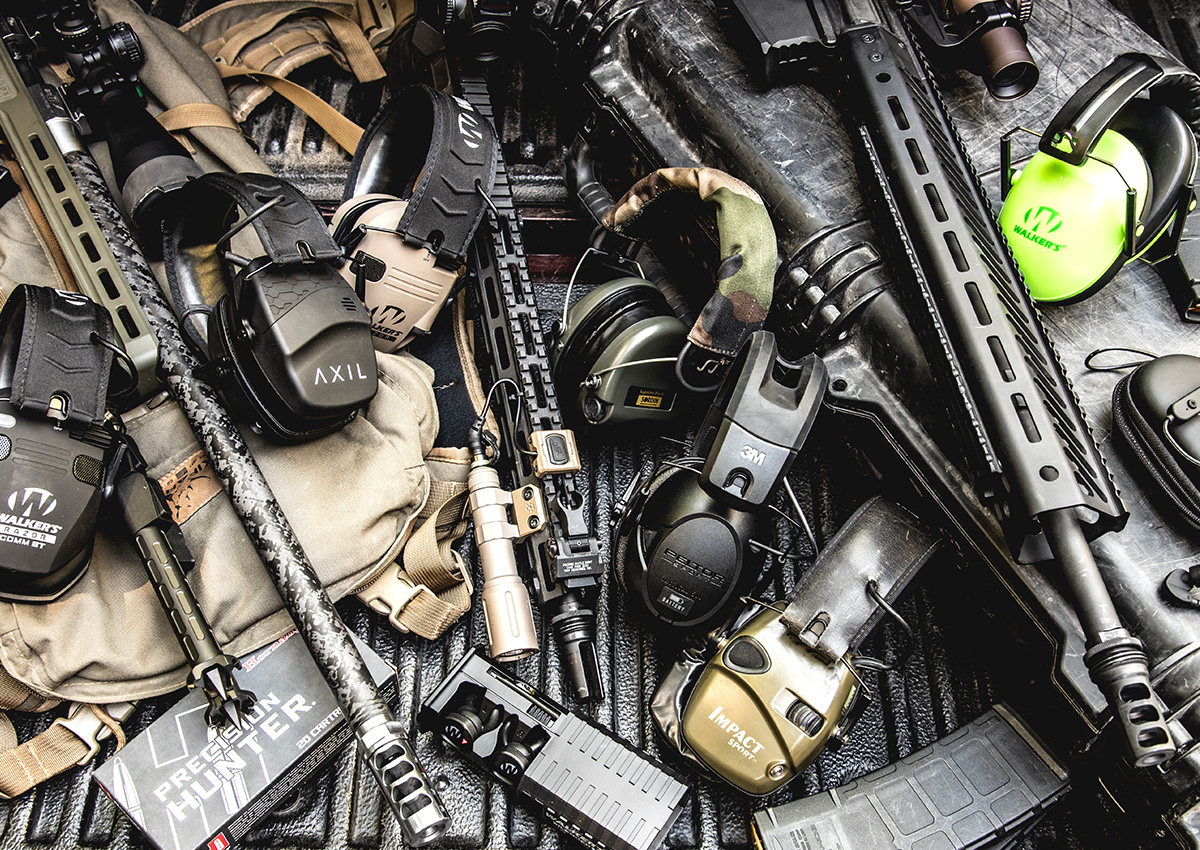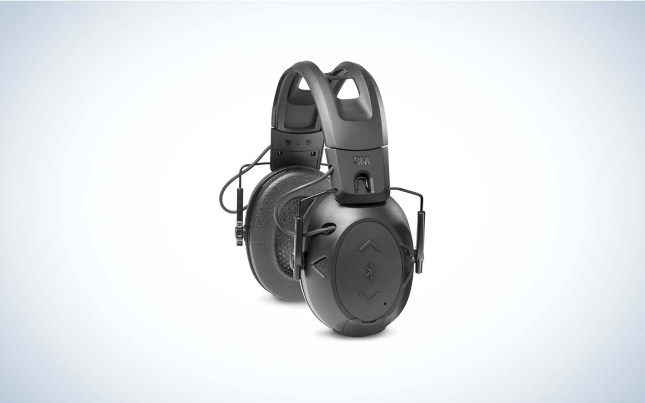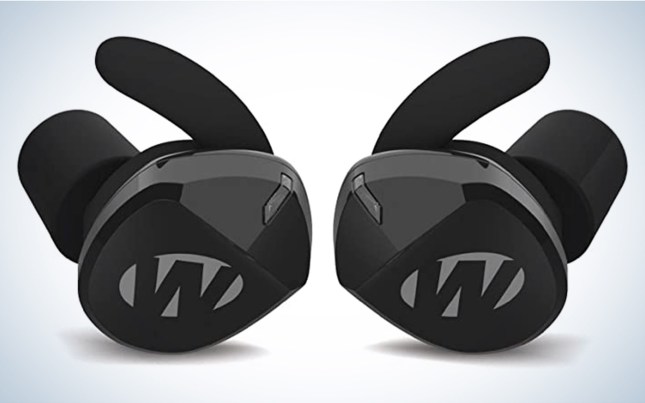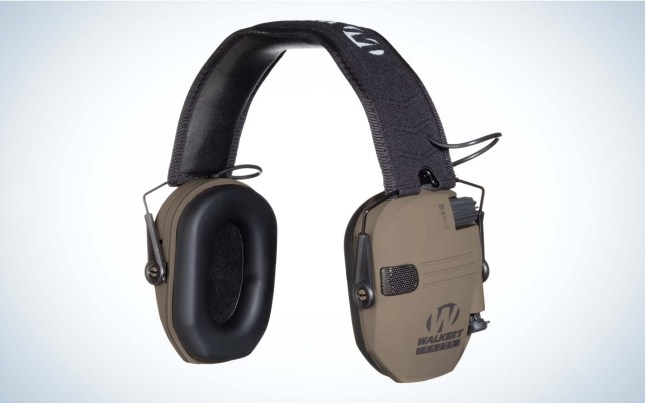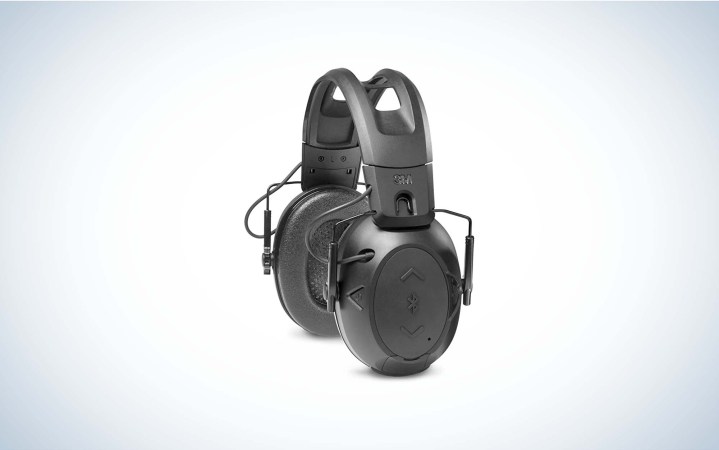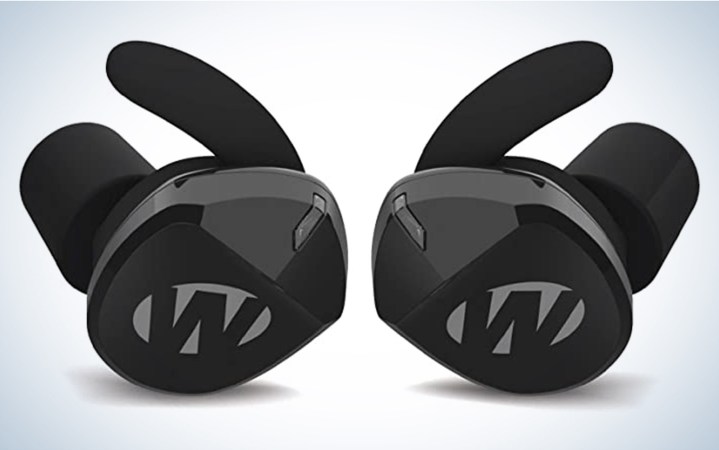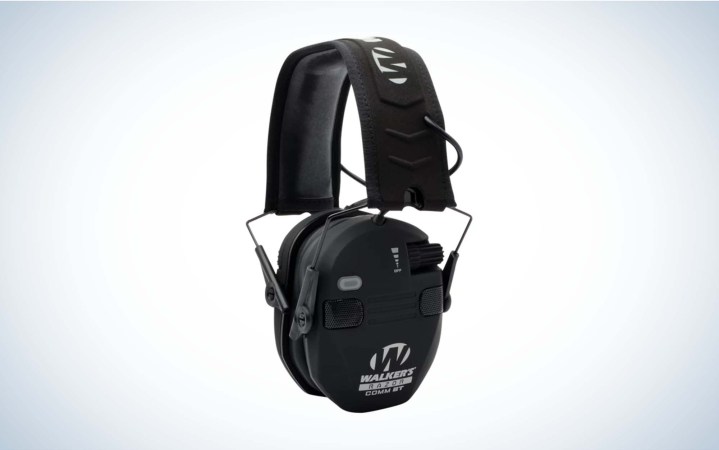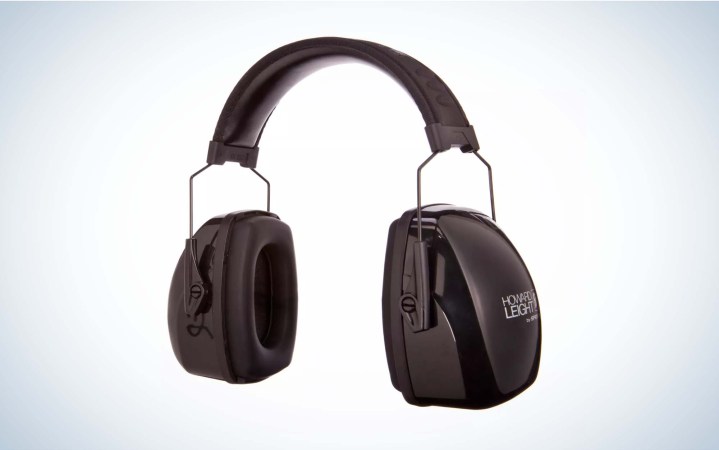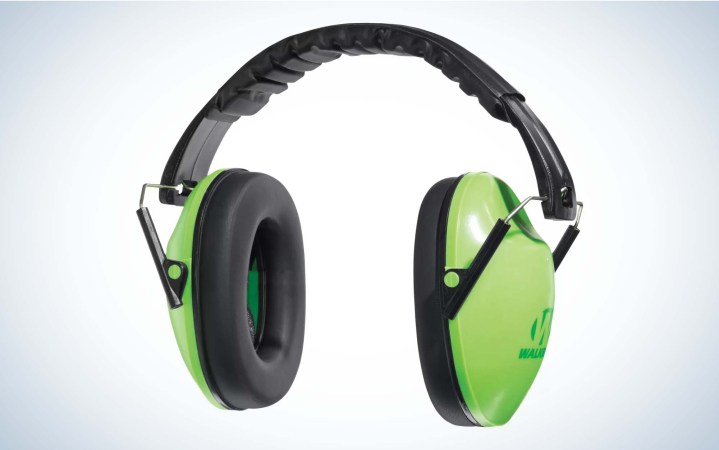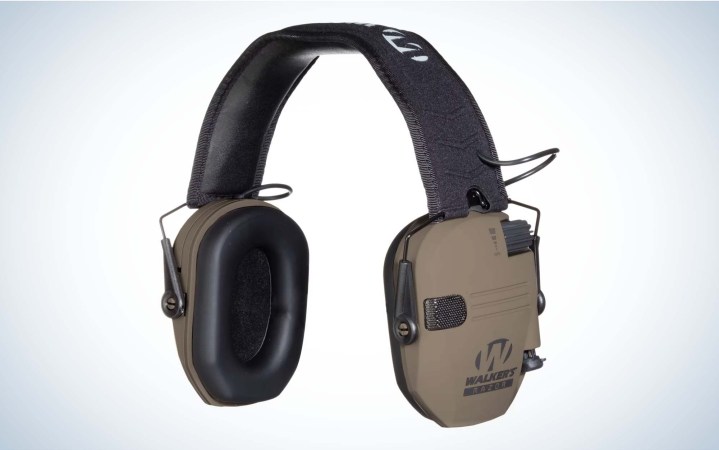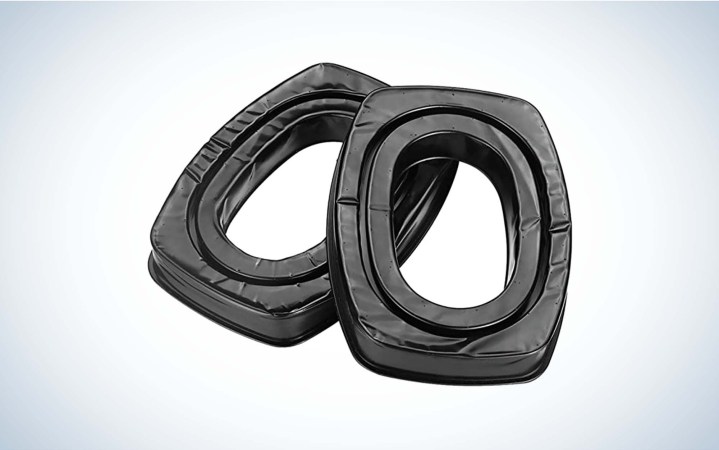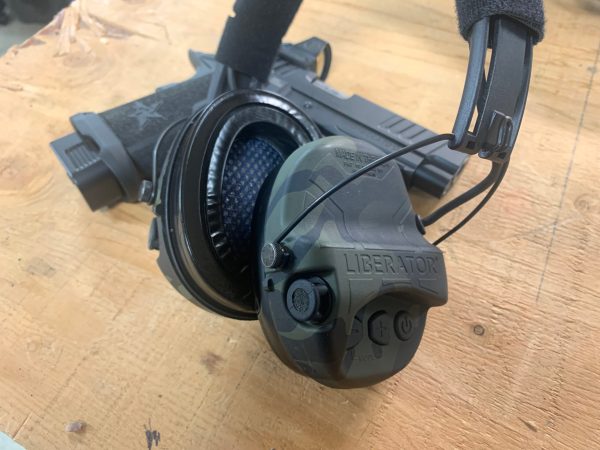We may earn revenue from the products available on this page and participate in affiliate programs. Learn More ›
A 9mm handgun has a 160-decibel report, which is loud enough to cause permanent damage without hearing protection. That’s why there are three things you need to bring to every gun range: hearing protection, eye protection, and common sense. I’ve been testing the best shooting ear protection over the past month to see, which offers the best comfort and decibel reduction. Here are my top picks.
- Best For Indoor Shooting Ranges: Peltor Sport Tactical 500
- Best In-Ear: Walker’s Silencer BT 2.0
- Best For Hunters (Over Ear): Walker’s Razor Bluetooth Quad
- Best Passive: Howard Leight Leightning L3
- Best For Kids: Walker’s Youth Folding Ear Muffs
- Best For All-Day Comfort: Walker’s Razor Slim
- Best Ear Pro Upgrade: Aftermarket Gel Cups
- Safariland Liberator HP 2.0
How I Evaluated the Best Hearing Protection
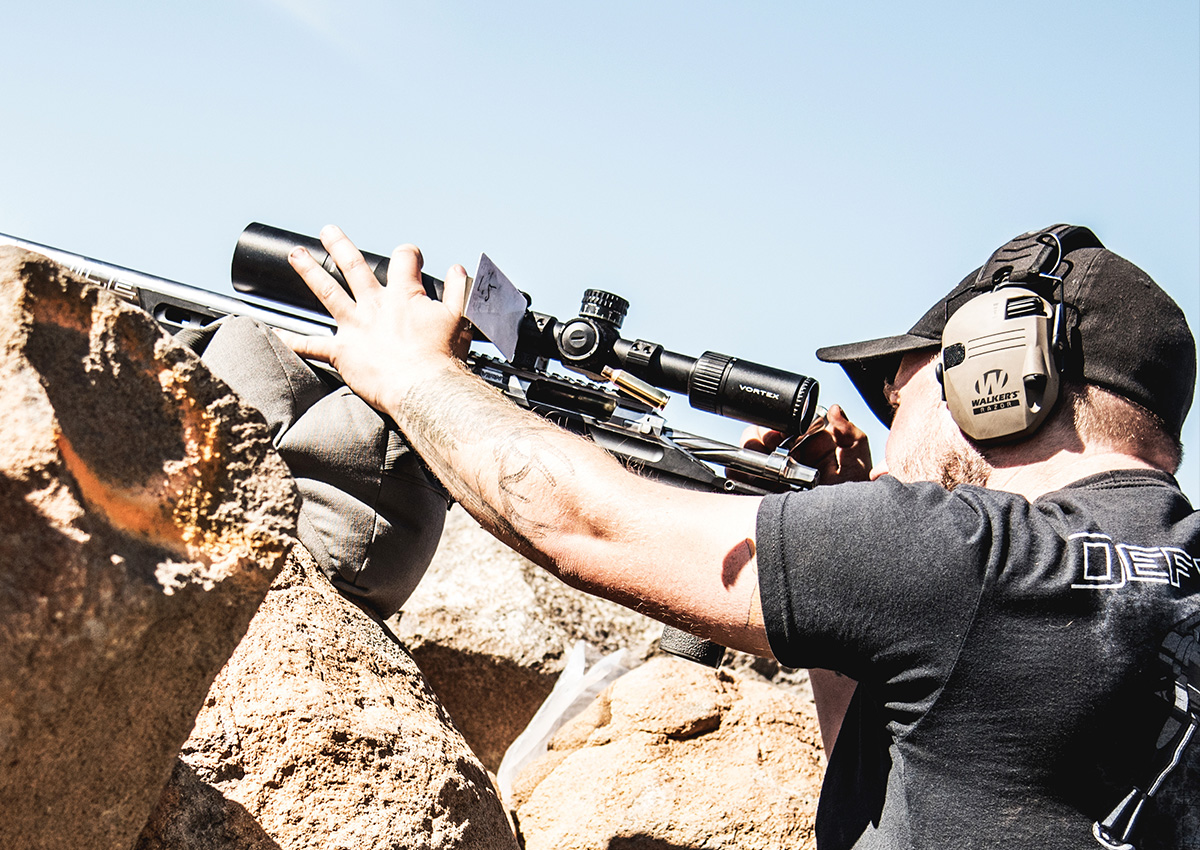
Testing the best hearing protection involved shooting, hunting, and wearing them for long periods. While doing those tests, I judged each pair on the following criteria:
Comfort
I’ve shot USPA events that go all day, and with bad ear pro, you end up with a headache after wearing them for six or more hours. Comfortable ear protection makes a huge difference, and I’m a stickler for any pressure points or discomfort felt after an hour of wearing the ear pro.
Noise Reduction
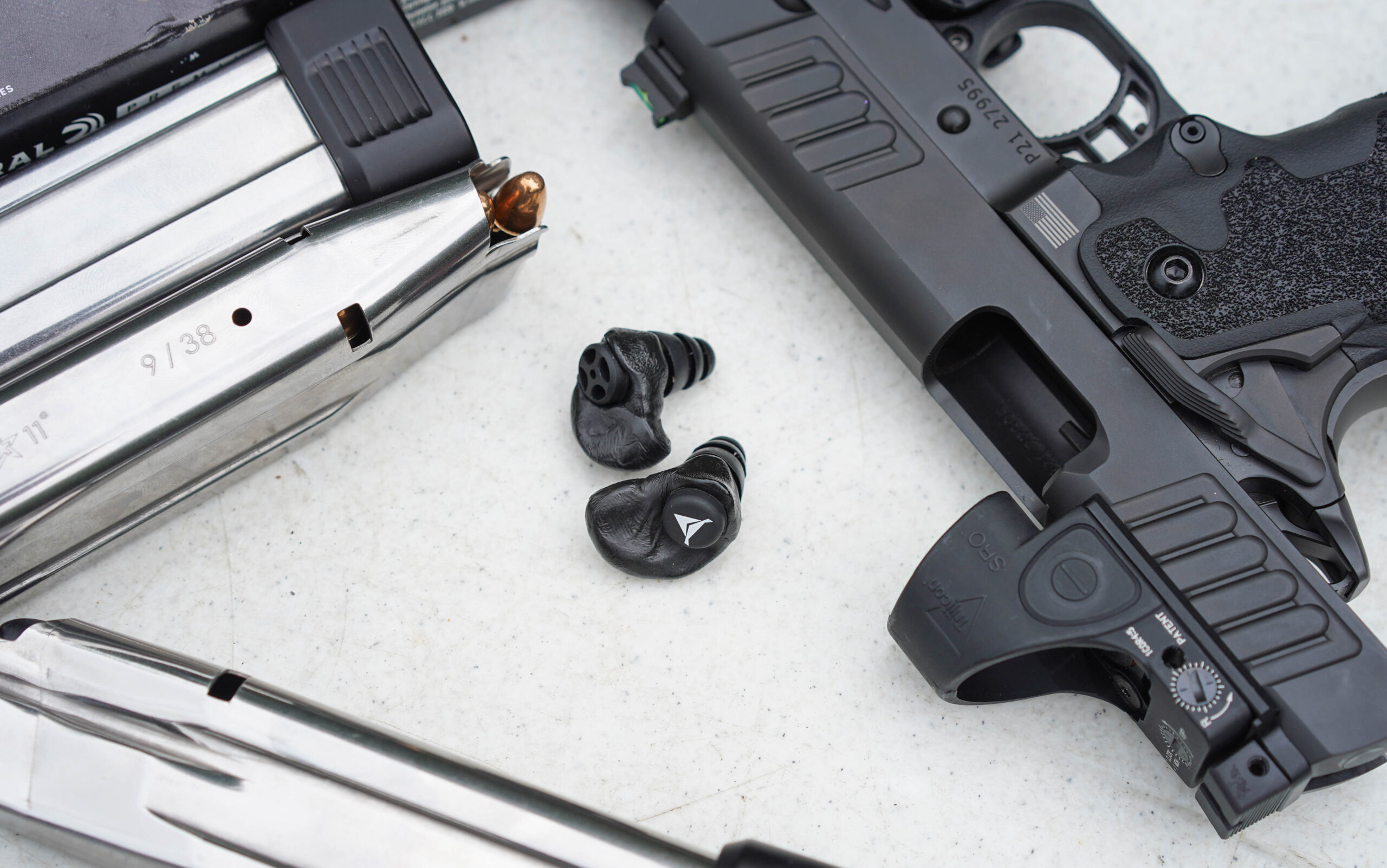
Shooting ear protection needs to protect your ears, and they do that by effectively blocking sounds higher than 100 dB. I tested this by wearing the ear pro at the range and while cutting grass with my very-loud mower.
Fit
Hearing protection must fit the user for comfort and protection. I evaluated how flexible each pair of ear pro was on shooters of different sizes.
Best Shooting Ear Protection: Reviews and Recommendations
Best For Indoor Shooting Ranges: Peltor Sport Tactical 500
Key Features
- Decibel Reduction: 26 dB
- Bluetooth
- Uses two AA batteries
- Ear cups have cut-outs for use with long guns
- Adjustable headband
Pros
- Comfortable
- Easily connects to your phone
- Easy volume adjustment
Cons
- Creates a pressure point on the top of the head after a few hours use
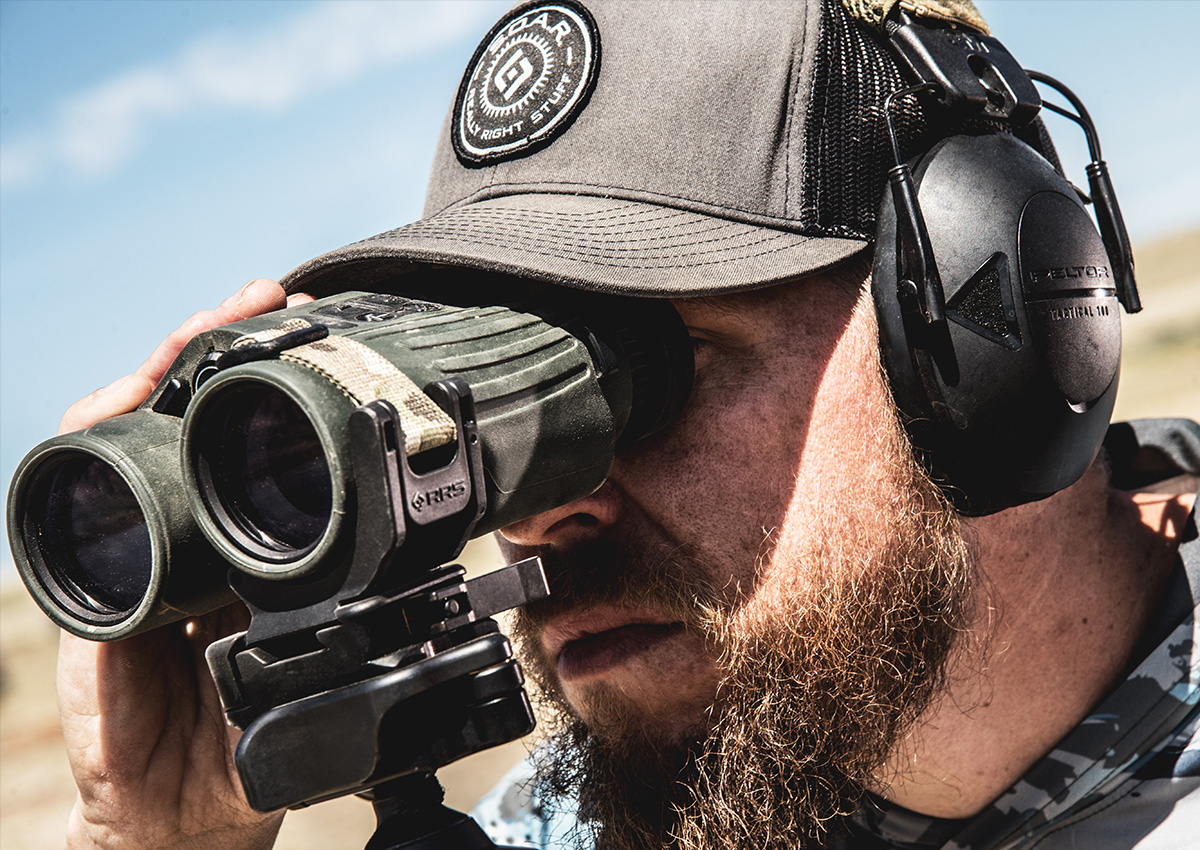
I’ve been wearing the Peltor Sport Tactical 500 for shooting and cutting grass for long stretches to test comfort and noise protection. The muffs have a nice seal on them, and they effectively reduce noise, even in loud indoor ranges. I like that electronic ear protection allows you to hear conversations at a normal level. It’s a great feature if you want to hear people talking around you, but I always end up in a bay next to loud talkers that I’d prefer to drown out. The Sport Tactical 500 have a feature just for such an occasion. There are two large arrows on the muff that control the volume of sounds that enter the internal speaker. With the volume down, voices are reduced to a low rumble. If you want to drown out the world around you even more, you can connect the ear protection to your phone via Bluetooth. Podcasts and music are great to listen to, but I especially like the Bluetooth feature for using a shot timer app I have on my phone. A standard shot timer won’t work at an indoor range, and using the par timer on my PACT is obtrusive around other shooters. So, instead I set the par timer on my shot timer app, and the sound feeds directly into my ears only.
The cups that come on the Sport Tactical are comfortable and nearly as good as the best gel cups I’ve used. I don’t think you’ll have to upgrade the cups unless you want maximum comfort. One area that does need improvement is the headband. After a few hours, the top of the band creates a pain point right at the top of my head. A cushioned band like the one on the Sordin Supreme Pro, would be ideal.
Best In-Ear: Walker’s Silencer BT 2.0
Best In-Ear
Walker’s Silencer BT 2.0
Key Features
- Noise Reduction Rating: 26 decibels
- Rechargeable
- Bluetooth
- Voice prompts
- Connects with Walker’s Link app for custom settings
Pros
- Comfortable
- Good sound suppression
- Carrying case recharges the ear buds
Cons
- Left and right ear bud will occasionally lose synch
- Too large to double under over-ear muffs
Over-the-ear hearing protection does a great job at providing maximum hearing protection, especially when paired with foam ear plugs. But, that style comes up short in comfort and it can get in the way of a proper cheek weld on some shotguns and rifles. That’s why a lot of shooters prefer in-ear hearing protection. In that category you can spend a few cents for foam plugs or more than $400 for Axil ear buds. While both of those extremes have their place, I think the Walker’s Silencer 2.0s strike a great balance of price, performance, and features. Like all electronic hearing protection, the Walker’s Silencer 2.0s allow you to hear what’s going on around you while dampening loud noises. They also connect to your phone like any bluetooth earbuds. So you can listen to music while you shoot and even take calls. They pair to the Walker’s app which has volume control, custom auto-off settings, and four sound settings with variable sound suppression and boosting.
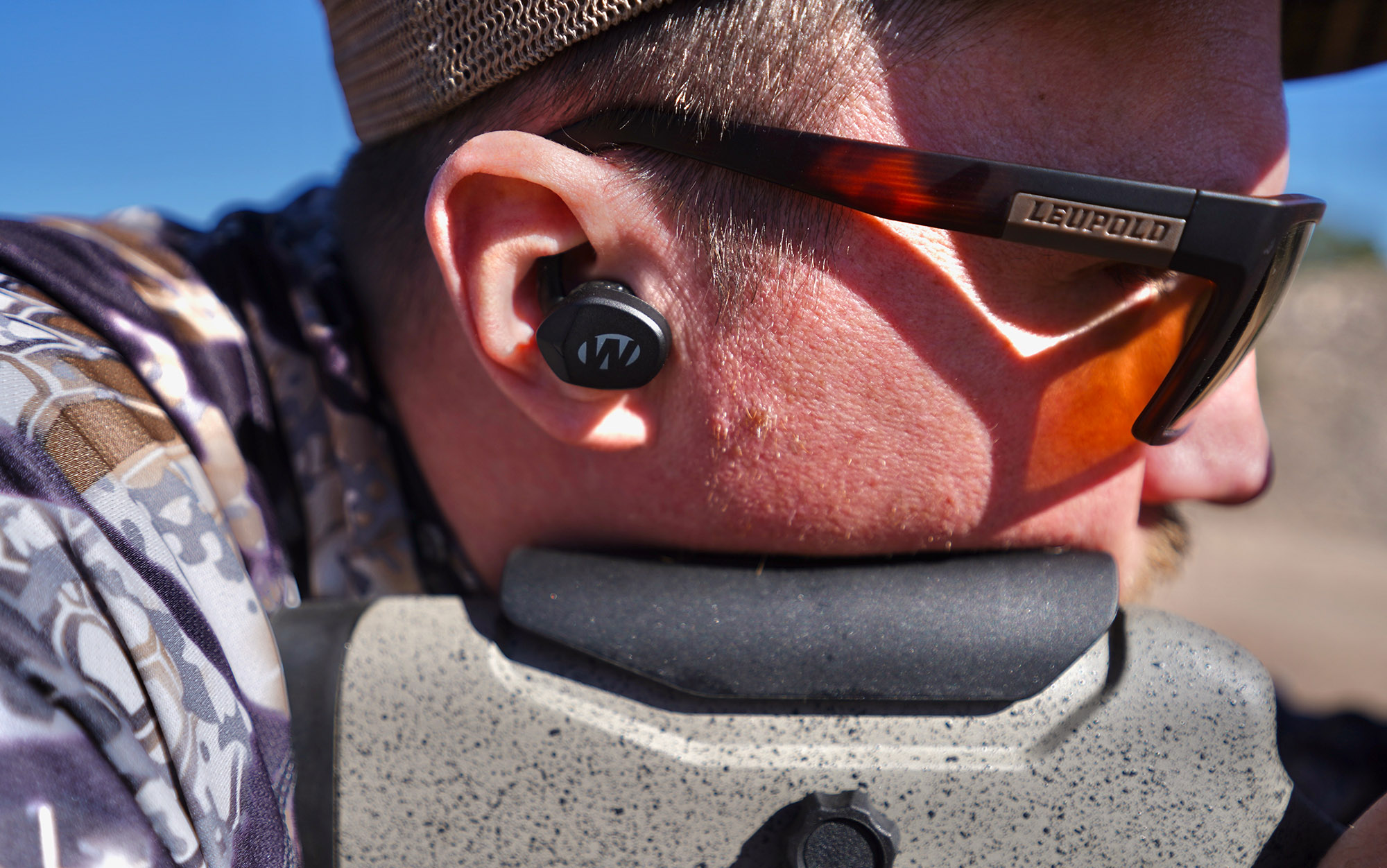
OL staff writer, Tyler Freel, tested the Silencer 2.0s during our annual gun test where he shot thousands of rounds through rifles and pistols. Freel says the Silencer 2.0s were comfortable and provided great sound suppression even when firing rifles with muzzle brakes. He used the Bluetooth function to listen to music, which worked well, but occasionally the left or right ear bud would lose connection. Also, the earbuds would lose the bluetooth connection occasionally. He found the ambient sound to be very natural, and that some wind on the mic will remind you that you’re wearing ear protection.
Best For Hunters (Over Ear): Walkers Razor Bluetooth Quad
Key Features
- Decibel Reduction: 23dB
- Bluetooth
- Two AAA batteries
- Four hi-gain omnidirectional microphones
Pros
- Excellent situational awareness
- Easy to pack
Cons
- Not the most comfortable
I like to think that I’m getting smarter as I get older. During an action-packed deer drive, I had a realization—after the smoke cleared and my ears stopped ringing—that I didn’t need to damage my hearing every time I went on a successful hunt. After that day, I wore ear muffs whenever I hunted with a gun. From deer to upland hunts, I rocked my Walkers Razor Quads every time I pulled the trigger.
I didn’t buy these ear pro specifically for hunting, they’re just what I had, but they ended up being a great choice. The reason why I still prefer them for hunting is the omnidirectional microphones. Most electronic hearing protection will allow you to hear just as well as you do with your naked ears, but you lose the ability to pinpoint a sound’s directions. You gain some of that ability back with the omnidirectional mics on the Razor Quads. It’s still not naked ear precision, but you can at least determine the general direction the sound came from.
The Razor Quads benefit greatly from aftermarket gel cups because without them, you can’t wear the ear pro for much longer than an hour without a headache.
Best Passive: Howard Leight Leightning L3
Key Features
- Decibel Reduction: 30 dB
- Padded headband
- Designed for pistol shooters
Pros
- Efficient noise reduction
- Comfortable
- Affordable
Cons
- Not ideal for rifle or shotgun shooting
Serious shooters invest in Gucci gear like electronic or even custom hearing protection. But, everyone should have at least one pair of Howard Leight Leightning L3s for guest shooters or for times when you forget your primary pair. These muffs are about $30 and offer an impressive 30 dB of sound reduction, and that’s a lot of shooting ear protection for the money.
The downside of these muffs is they are bulky and will interfere with the cheek weld on most shotguns and rifles. But, these are an excellent option for maximum hearing protection, especially helpful for new shooters.
Best For Kids: Walker’s Youth Folding Ear Muffs
Key Features
- Decibel Reduction: 23 dB
- Passive hearing protection
- Suitable from ages six months to eight years
- Colors: Coral, Highlighter Yellow, Next Camo, Blue, Green, Orange, Pink
Pros
- A lot of color options
- Designed to fit youth shooters
- Light
Cons
- Most effective when used in conjunction with ear plugs
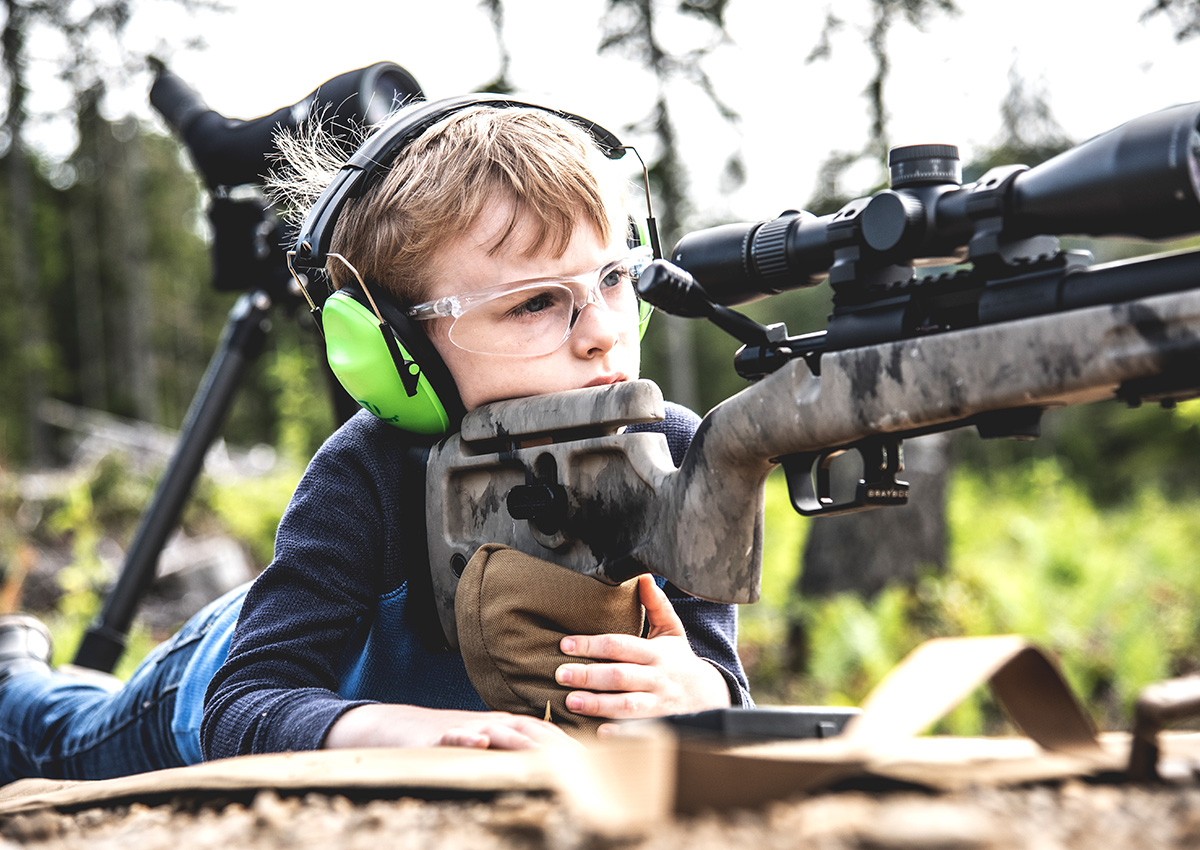
The best rifles for an adult aren’t the best for young shooters, and the same goes for hearing protection. That’s why these kid-sized muffs are ideal for getting a young shooter started. They’ll fit their head for comfort and a good seal. They also come in a wide range of colors, so they’ll be psyched to put them on. If you’re headed to an indoor range or someone is shooting a braked rifle nearby, it’s a good idea to use some foam plugs in addition to the muffs because the muffs alone provide 23 dB of protection.
Best For All-Day Comfort: Walker’s Razor Slim
Key Features
- Decibel Reduction: 23 dB
- Bluetooth
- Two AAA batteries
- Four omnidirectional microphones
Pros
- Comfortable
- Padded headband
- Low profile
Cons
- Batteries die if you forget to turn it off
The Walker’s Razor Slim hearing protection have the same omnidirectional microphones I liked in the Razor Quads. That features is excellent, but they are also comfortable enough to wear all day.
The padded headband, soft ear cups, and scant weight make these ear pro so comfortable. I also like that the headband can be extended enough that it sits above my enormous head—keeping the headband off my head reduces pressure for all-day comfort. They’re also so light that I hardly notice I’m wearing them.
Best Ear Pro Upgrade: Aftermarket Gel Cups
Key Features
- Affordable
- Fit many of the best shooting ear protection
Pros
- Comfortable
- Cooler than foam
Cons
- Added expense
A gel cup is the best thing you can add to an ear muff to increase comfort. They are easy to install and cost about $30. Here are some gel cups that fit popular shooting ear protection.
Safariland Liberator HP 2.0
Key Features
- Decibel Reduction: 26 dB
- Can be used with behind-the-head or helmet mounts
- Uses CR123 batteries, HP-R uses a USB-C rechargeable battery
- Durable and washable
- Three modes of operation
Pros
- Comfortable
- Long battery life
- Different modes for different activities
- Slim earcups don’t interfere with rifle stocks
Cons
- Shooting indoors or with muzzle brakes requires doubling up with plugs
One of the most comfortable sets of ear protection I’ve worn is the new Liberator HP 2.0 from Safariland. These muffs are tough, versatile, and designed to be compatible with the overhead strap, behind-the-head harness, and helmet setups. They have three electronic operation modes, which range from full ambient sound amplification with active protection from dangerous sounds, to full sound suppression for very loud environments.
The standard model uses a CR123 battery, and the HP-R model, which I have, uses a rechargeable battery that replenishes via a USB-C cable. All functions of the headset are controlled by the power and volume buttons, and each ear muff has a front-facing speaker. It’s easy to forget that you’re wearing ear protection because the sound is good, but direction pinpointing isn’t easy.
The only downside I’ve found is that the overall level of sound suppression could be better. It’s fine for handgun and general range use, but when using in tight quarters, indoors, or next to someone shooting through a muzzle brake, the impulse is still loud enough to hurt your ears—so double up with foam plugs in that case.—Tyler Freel
How to Choose the Best Shooting Ear Protection
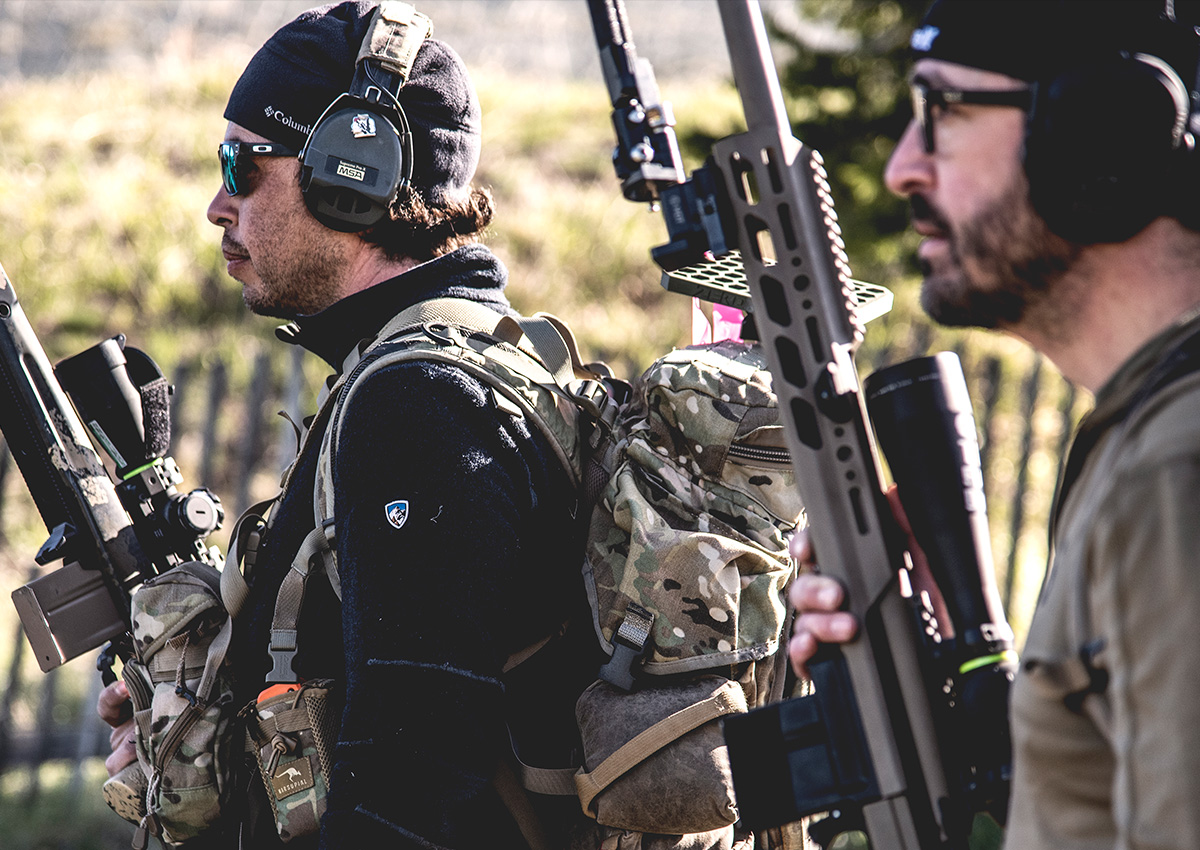
When you’re choosing hearing protection, you’ll first have to decide between over-ear and in-ear protection. Here are some pros and cons of each style.
Ear Plugs
Pros
- Low profile
- Excellent noise protection
- Usually less expensive than muffs
Cons
- No sharing (Need to be sized for your ear canal.)
- Wide quality spectrum
- Can lose seal from sweat and movement
Ear Muffs
Pros
- One size fits most
- Many electronic and bluetooth options
Cons
- Can be uncomfortable
- Can interfere with cheek weld
If you’re shooting in an especially loud environment, like an indoor range, the best shooting ear protection is to use both ear plugs and ear muffs at the same time.
Active vs. Passive
Passive hearing protection uses foam or specialized material to create a barrier that protects your ears. Active hearing protection uses both passive and electronic protection. The advantage is that the external microphone and internal speakers allow shooters to hear normally—keeping situational awareness—while blocking hearing damaging audio levels.
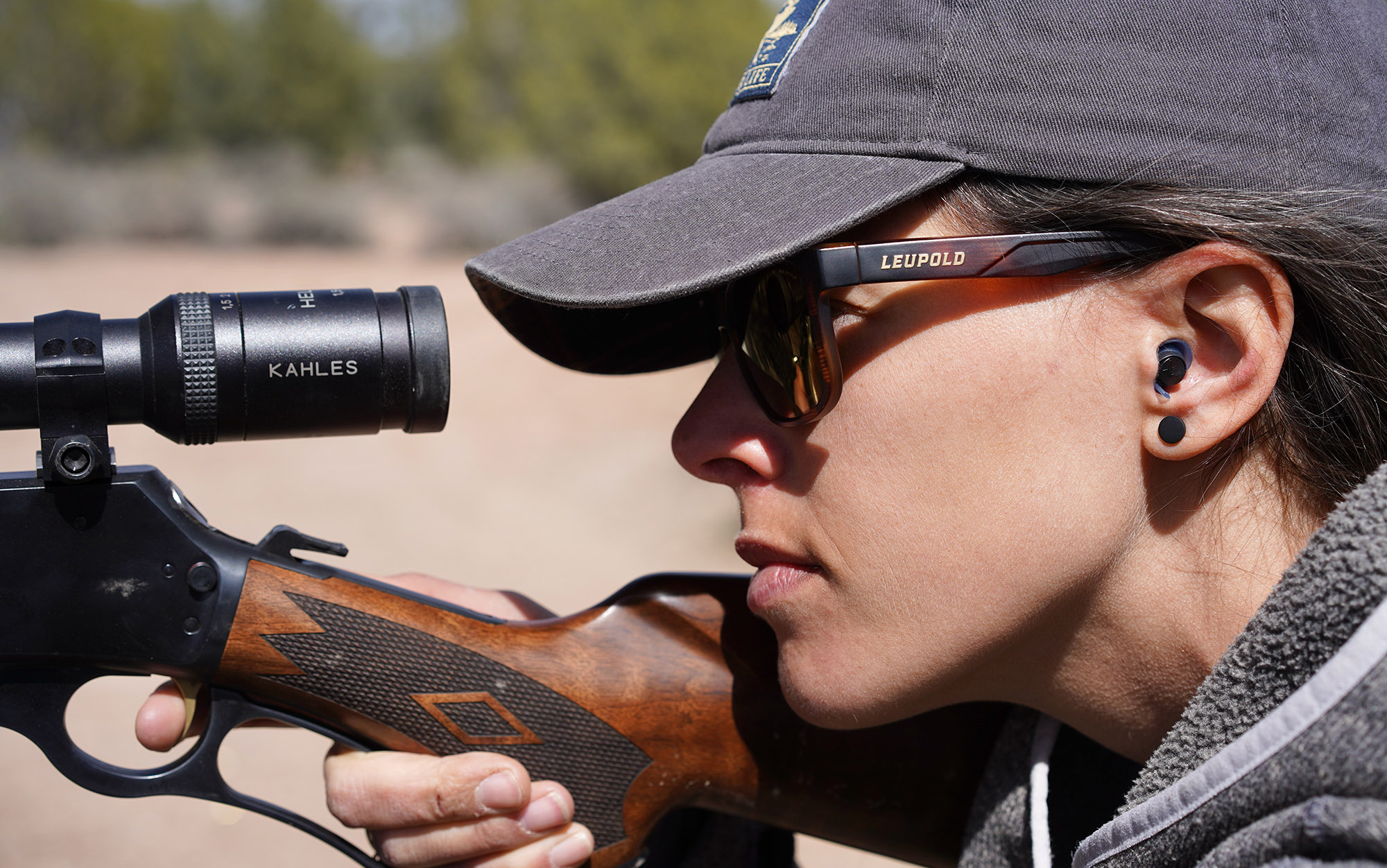
Comfort
Some ear pro is comfortable all day, but others cause discomfort after a few hours. The key to comfort is padding used in over-ear and the fit of in-ear protection. Look for ear muffs with gel pads and ear plugs that offer a custom fit.
Features
Shooting ear protection does more than protect your hearing while you’re shooting the best handguns—they also can play music and take phone calls. Bluetooth is just one of the great features of the best hearing protection. Here are a few others to look for:
- Compatibility with aftermarket gel pads
- Custom fit
- Size
FAQs
The best shooting ear protection is comfortable and has more than 20 dB of protection.
Ear muffs are easier to take on and off, and don’t require custom fitting. Ear plugs must be fit to your ear canal but offer more comfort and protection than muffs.
Anything over 25 dB of reduction is excellent performance for ear plugs.
Most firearms produce 160 decibels and you’ll need to drop that to under 140 decibels to prevent hearing damage.
Why Trust Outdoor Life?
Since 1898, OL has been a leading authority in testing and reviewing hunting gear, fishing tackle, guns and shooting equipment, and much more. We have more than a century-long history of evaluating products, and we’re now bringing that expertise to online reviews. Our editors are experienced outdoorsmen and women, and most importantly, we’re trained journalists. We prioritize field testing and objective data when reviewing products. We conduct interviews with gear manufacturers and engineers as well as outdoor experts so that our readers have an understanding of how and why a product works—or doesn’t.
Advertising does not influence our gear reviews and it never will. While we always focus our coverage on standout products—because we want our readers to be aware of the latest and greatest gear—we also cover the flaws and quirks of any given product.
Final Thoughts on the Best Shooting Ear Protection
The best shooting ear protection makes a day at the range much more enjoyable. Choose the pair that best suits your needs, and wear them each time you pull a trigger.
- Best For Indoor Shooting Ranges: Peltor Sport Tactical 500
- Best For Hunters (Over Ear): Walker’s Razor Bluetooth Quad
- Best Passive: Howard Leight Leightning L3
- Best In-Ear: Walker’s Silencer BT 2.0
- Best For Kids: Walker’s Youth Folding Ear Muffs
- Best For All-Day Comfort: Walker’s Razor Slim
- Best Ear Pro Upgrade: Aftermarket Gel Cups
